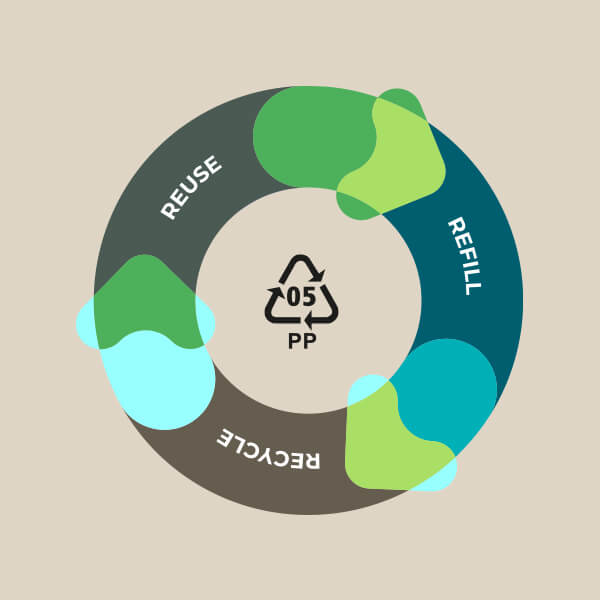Energy consumption in labs: how to make a real, green difference by taking just a few simple actions


Author:
Nikoline Borgermann
Independent green lab consultant at Ava Sustain
Key topics: Sustainability, Environmental Footprint, Climate Change, Greener Future
Category: Sustainability
It’s not easy to see – in fact it isn’t visible to our eyes at all – but labs are consuming massive amounts of energy. Laboratories typically consume 10 times more energy than office buildings, and labs consume more energy per square meter than any other industry – except for data centers!
Considering that roughly 40 % of global CO2 emissions come from generating electricity, there´s a lot of green potential in reducing energy consumption – especially in the labs.
My name is Nikoline Borgermann, I work as an independent green lab consultant at Ava Sustain – and here’s what you can do to drastically reduce energy consumption in your lab.
The autoclave: a blessing and a curse
Autoclaves are used for sterilizing utensils, reagents and waste, and they are indispensable for bioscience research. Unfortunately, they also leave an enormous environmental footprint!
Not only can a large autoclave consume several hundred liters of water in just one sterilization cycle, it also consumes massive amounts of energy in the process.
Autoclaves generally come in two flavors: small bench-top autoclaves and large steam-jacketed autoclaves. In a steam-jacketed autoclave, water is first heated up to make steam, and then the steam is cooled down to a temperature that allows it to be discharged through the metal pipes without melting the pipes. And while this process is central to ensuring sterility, it really isn’t great from an environmental perspective.
Fortunately, you can reduce the resources going into autoclaving by changing a few habits:
Firstly, autoclave only what is necessary. If what you are working with doesn’t have to be sterile, don’t autoclave it! Secondly, don’t run the autoclave unless it’s full. An autoclave consumes the same amount of water and energy regardless of how full it is. So if your lab alone isn’t able to fill up the autoclave within a meaningful period of time, maybe you can share it with other labs?
If you want to take your green autoclaving actions to the next level, you can investigate whether you can get a water-saving device that fits your specific model. Also, remember to advocate for a greener model if your lab or institute is going to purchase a new autoclave!
It’s simple but true: shutting the sash of the fume hood has huge impact
One of the main reasons for a lab’s massive energy consumption is the air circulation; the fume hoods, the laminar air flow (LAF) benches, the biosafety cabinets, the point exhausts, and the general air conditioning are all taking a serious toll on the planet.
In fact, a fume hood can consume as much energy as 3.5 households when it’s running at full speed. And depending on the model and age of your LAF benches and biosafety cabinets, the numbers for these are not prettier.
So what can we do about air circulation? Well, the air circulation appliances are there to keep us safe and protect our samples from contamination, so we can’t do without them – but we can turn them off, or put them on reduced speed, when we don’t need them. If you shut the sash of the fume hood when you leave it, you can reduce energy consumption roughly by half – and if you keep it low while working under the fume hood, you are not only reducing energy consumption, you are also increasing your own safety.
Another way to reduce how much energy goes into air circulation is to prevent the blocking of air flow. When we store bottles, racks, waste and the like in fume hoods, LAF benches, and biosafety cabinets, we are impeding the air flow and thus making the appliances work harder – and consume more energy.
All the other appliances: does it make any difference to turn them off?
So what about all the other appliances in the lab? The water baths, heat blocks, centrifuges, shakers, rotators and so on.
While there certainly are some specific pieces of lab equipment that are particularly energy-intensive, it also has huge green impact to turn other, less energy-intensive pieces of equipment off. Heat blocks and water baths can’t compare with fume hoods and autoclaves, but they are probably consuming more energy than you think: A heat block at 90°C easily consumes as much energy as one and a half of your -20°C freezers, and if your 10-12 L water bath is at 37°C, it’s consuming as much energy as two of your small fridges. Read that again!
We have many different appliances in the lab, most of which use much more energy than our appliances at home, so it all adds up when we get into the good habit of turning off equipment that isn’t in use. Some labs have reportedly reduced energy consumption by 50% simply by turning off equipment that isn’t in use! Not least because turning off equipment reduces energy consumption directly as well as indirectly: turned-on equipment heats up the lab and thereby causes air conditioning and cold storage units to work harder and consume more energy. So by turning off centrifuges and shakers, for example, you are influencing your air conditioning, fridges, and freezers. If you would like to know how to reduce the environmental impact of cold storage, you can find tips and tricks in our previous article: https://www.starlabgroup.com/GB-en/freezer-challenge.html
Turning off equipment is easier said than done – here are three ways to make it easier
Turning off equipment that isn’t in use is simple in principle, but that doesn’t mean that it’s easily done. Lab users are typically busy and do not always remember to turn off equipment after using it. Very often, though, the ‘problem’ is not only the bustle and forgetfulness; most groups are also not aligned about when to turn off equipment.
One way to make it easier for you and your lab mates to align is to make common agreements. At a group meeting, you can go through the different pieces of equipment in the lab and decide on a rule for each. What’s the rule for this piece of equipment? Is it “Turn off directly after use”, “Ask before turning off”, “Never turn off”, or “Turn off if you are the last person leaving the lab”? Once you have agreed on common rules for the appliances, put a sticker on each appliance that states the rule. The stickers serve as friendly reminders to you and your lab mates, so you remember to turn off equipment according to the common agreements.
Another way to reduce how long equipment is on without being in use is to measure how long it takes for your equipment to get ready. Working in a lab can be stressful and the days can be long, so we prefer not to have to wait for equipment to get ready. Simply, it’s so much more convenient when the heat block is warm and the centrifuge cold exactly when we need them to be.
While this perspective is completely understandable, it also makes us turn on equipment long before we actually need it. It’s wonderful and time-efficient when we don’t need to wait for equipment to get ready, but maybe we don’t have to turn it on the minute we enter the lab if we only need it a few hours later?
Very often, we are not sure how long it takes for equipment to get ready, so we make sure to turn it on well in advance! That is why it’s so impactful to measure the actual time it takes. How long does it take for the heat block to reach 90°C – or the centrifuge to reach 4°C? Once you know the time it takes, write it on a label and stick it on the appliance. Then, you and your lab mates will always know how far in advance you need to turn on equipment – and you will become comfortable with turning things on at the right time, not long before.
Finally, outlet timers can be used to make sure certain pieces of equipment are turned off over night. They are cheap, easy to use and highly recommended!
Reducing energy consumption isn’t only green, it’s also beneficial in other ways
When you make good habits of turning off equipment in the lab, you are not only reducing the carbon footprint of your lab work, you are also reducing the electricity bill and extending the lifespan of the equipment. And while group leaders and lab users may not directly notice reduced electricity bills, they certainly notice when equipment breaks down and needs repair or replacement! Not only is it costly to repair and replace equipment, it’s also very often a waste of time. I personally lost count of the times my lab mates and I had to stall or postpone experiments because we were waiting for a repairer to come and fix a piece of equipment. And in most cases, it wasn’t over when the repairer finally came; we often had to wait for spare parts to arrive and for the repairer to come back. In the worst cases – when the repairer couldn’t fix the equipment despite brand new spare parts – we had to wait once again for a new piece of equipment to arrive …
So if your boss or lab mates are not already digging the green lab agenda, you can let them know that green actions can help you save money – and time!
Tips and more.


The Starlab Green Mission.
Discover Starlab's tips, products and services on the subject of sustainability. Get to know our Green Team. We look forward to a joint #EcolutionMovement.
Podcast: Sustainability in laboratories.
Klaus Ambos, CEO of the Starlab Group, dives deep into the topic with our guest Nikoline Borgermann aka Avasustain – a biochemist and environmentalist.






